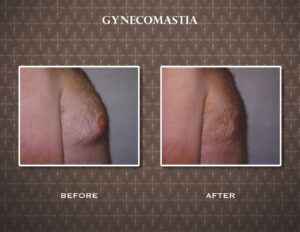Posted July 25, 2013 in Uncategorized
By Charles A. Messa, III, MD, FACS
The term comes from the Greek words gyne meaning “woman” and mastos meaning “breast.” In practical terms, this means abnormally large breasts on men. The condition is relatively common in adolescent boys, and 90% of the time symptoms disappear in a matter of months, or as adolescence wanes, a few years later. But the remaining 10% are burdened with a social handicap that can cause shame, lowered self-esteem and confidence.
There are many potential causes including puberty, steroid abuse, obesity, marijuana use, side effects of medicine, and certain genetic diseases. Gynecomastia can be emotionally devastating. A man or boy with gynecomastia struggles with anxiety over such simple acts as taking off his shirt at the beach. In cases of obesity, weight loss can alter the gynecomastic condition, but for many it may not totally eliminate it. For all other causes, surgery is the only known physical remedy, and often the best solution. Once the contour of the chest is restored to normal, the patient can begin to feel more confident and self-assured with his physical body image.
Plastic surgery to correct gynecomastia is technically called reduction mammaplasty, and reduces breast size, flattening and enhancing the chest contours. In severe cases of gynecomastia, the weight of excess breast tissue may cause the breasts to sag and stretch the areola (the dark skin surrounding the nipple). In these cases the position and size of the areola can be surgically improved and excess skin may be reduced. The procedure can be performed under intravenous sedation or general anesthesia depending on each individual’s medical condition.
In cases where gynecomastia is primarily the result of excess fatty tissue, liposuction techniques alone may be used. There are various liposuction techniques that may be used; the technique most appropriate in your case will be defined prior to your procedure.
Excision techniques are recommended where glandular breast tissue or excess skin must be removed to correct gynecomastia. Excision also is necessary if the areola will be reduced, or the nipple repositioned to a more natural male contour. Incision patterns vary depending on the specific conditions and surgical preference.
Sometimes gynecomastia is treated with both liposuction and excision. Any surgical treatment to correct gynecomastia will require incisions. While most incision lines are concealed within natural contours, some may be visible and are a necessary result of breast reduction surgery.
After surgery, dressings or bandages will be applied to your incisions and an elastic bandage or support garment may be used to minimize swelling and support your new chest contour as it heals.
The procedure duration is typically one to two hours and most men are able to return to work within 4 to 5 days depending on how much lifting is required.
